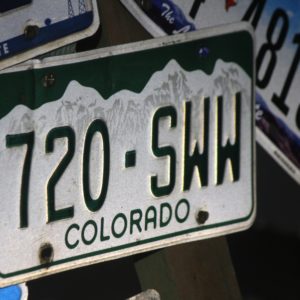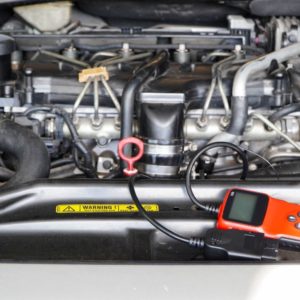Buying a new vehicle can be an exciting yet stressful experience. You’ll have to ensure that you comply with all the rules concerning the registration of a new vehicle in your state. That includes making sure that your new car is issued a license plate.
But what if you want to use your old car’s license plate on your new one? Is that possible? Let’s look at what a license plate transfer entails.
Can You Transfer License Plates to Another Car?
The rules for transferring a license plate from one car to another vary per state. In most states, you’ll be allowed to transfer a license plate from one vehicle to another if you own both vehicles.
How to Transfer License Plates to a New Car
The steps for transferring a license plate to a new car may differ per state. To give you an idea, here’s an outline of what the process would entail if you want to transfer your license plate to a new car in California, Illinois, and Washington:
Transferring a License Plate in California
In California, license plates are issued to vehicles. So when you sell a car, the license plate is automatically transferred to the new owner.
If you’re the one who bought the vehicle and you’d like to retain your old plate, you’ll have to go to one of the Department of Motor Vehicles (DMV) offices in your area to submit an application.
Transferring Special License Plates
One of the reasons why an owner would want to assign his old plate to a new vehicle is that it’s a special license plate. These special plates can be issued upon request. It’s usually used to recognize an owner’s achievement, status, or occupation.
In California, you can try to reassign a special license plate to another vehicle that you own. Here’s what you need to do:
- Go to your local DMV office.
- Submit form REG 156 (application for replacement plates, stickers, and documents). This form is required before removing your license plate.
- Pay the fee.
- To assign the old plate to another vehicle, you’ll have to ensure that the registration card of the new vehicle is under the license plate owner’s name. The vehicle’s registration must be up-to-date and all the renewal fees must be settled.
- Depending on the current status of the vehicle, you’ll be asked to submit a special interest license plate application form (REG 17) or a special recognition license plate application (REG 17A).
- You’ll also have to surrender the license plate currently assigned to the vehicle.
- Settle all the fees.

Transferring License Plates in Illinois
In Illinois, a license plate is assigned to the owner and not the vehicle. That means license plate ownership can’t be transferred when you sell a car. But like in California, you can also transfer a license plate to a vehicle that you own.
Here’s an overview of what an Illinois license plate transfer entails:
- The Application for Vehicle Transaction(s) (VSD 190) form must be completed. You can fill out and print this form using the Electronic Registration and Title (ERT) System.
- If you don’t want to do it online, you can visit the Secretary of State facility. You can also call 800-252-8980 (applicable for Illinois) to get a copy of the form.
- You’ll be asked to pay a fee for a transfer of plate or transfer of title and plate.
- Submit the identity card from the most current vehicle registration for the license plate that is being transferred.
Transferring License Plates in Washington
You can also transfer a license plate from one vehicle to another if it’s registered under your name and if the vehicle is registered in Washington.
You can either mail the requirements to your vehicle licensing office or visit them personally.
Here’s an overview of the process:
- Secure a copy of registration for your new vehicle.
- Write a letter of application expressing your intention to transfer your old plate to a new vehicle. Make sure that it includes the license plate number, your current address, and your mailing address.
- If you’re mailing the application, make sure to include a check for the fees. If you’re not sure how much the fee is, you can contact the vehicle licensing office before applying.
What Happens If I Sell My Vehicle to a Family Member?
Again, it’ll all depend on the rules applied to your state. But generally, if you sell your vehicle to an immediate family member, you won’t need to apply for a transfer of license plate. The car can retain the old plate. However, you’ll have to prove to the DMV that the person is indeed part of your immediate family and carry documents as needed.
Can I Let the Dealership Do the Transfer Paperwork for Me?
If you bought your new vehicle through a dealership and you traded in your old car, the dealer may do all the necessary paperwork for you. You’ll have to provide them with the same information you’ll be asked when you visit the DMV yourself. The only advantage is that it’ll save you time and effort.
The Importance of License Plates
We tend to ignore that slim piece of reflectorized metal on your front and rear bumpers. But if you come to think of it, your license plate is as important as your driver’s license or your ride’s registration papers.
It’s proof that your vehicle is registered and that it complies with the regulations of the state you’re in. It also gives your vehicle a unique and legal identity. So, make sure you comply with the license plate regulations in your state.
Any information provided on this Website is for informational purposes only and is not intended to replace consultation with a professional mechanic. The accuracy and timeliness of the information may change from the time of publication.


















